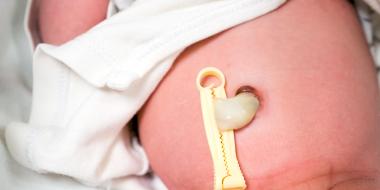Pregnancy is such a wonderful time. Whether it took some work to get pregnant or it happened quickly, the excitement of welcoming a new baby is felt by all. For pregnant women and their partners there is a lot of focus on the labour process. Couples want the best birth experience with positive birth outcomes. For this to happen, I believe couples need to be educated on the interventions they may encounter to be able to make the best choices. Here are some common interventions that come up in labour and the possible cascade of that can result.
Cervical expectations
Something I like to educate my birth doula clients about early on is the different stages the cervix has to go through to allow a baby to pass through the birth canal. It has a critical role in labour. The cervix has to go from posterior (toward the back) to anterior (toward the front), from super thick to thin (effacement), and from closed to open (dilation). These stages happen over the course of a pregnancy, especially as the due date approaches. My hope is that women can go through labour unmedicated, but as we know this is not always the case. To keep medical intervention at a minimum I recommend women get to about 5cm dilated before seeking pain management. The longest part of labour is getting to about 5 cm; this is when most of the work happens, but is also the “easier” part of labour. For a first delivery it can take many hours for the cervix to thin and dilate. Going from 6-10 cm is a very intense part of labour, but is also the shortest part and is when the cervix can virtually melt away in no time. With good support and understanding of this process, if women get to this active labour stage, a drug-free delivery is often possible.
Intervention cascade parade
In some cases one intervention leads to another, which can lead to another, and so on. Some common interventions include prostaglandin gel, amniotomy, Pitocin, and an epidural.
Prostaglandin gel
Used to induce labour when the cervix is still quite thick, not sufficiently effaced, and still needs some help thinning out. The gel is often applied to a woman’s cervix and she is sent home. After several hours mild cramps will begin signalling the start of the labour process.
Amniotomy
This happens when the bag of waters is broken either when labour is not progressing well on its own or to induce labour for other reasons. It can really pick up a slow-to-start labour, but also brings with it big contractions, so women need to be prepared for big, possibly less gradual, surges.
Pitocin
A drug made to mimic a female’s natural oxytocin production—the hormone that signals contractions to start to help the cervix dilate. Pitocin is also used to induce labour or to support a labour that is not progressing well. It will cause contractions that squeeze the baby more intensely than the body’s natural oxytocin and not all babies like it. If the baby’s heart rate dips, a c-section can result.
Epidural
Used for pain management. It is a spinal injection administered by an anesthesiologist. It works at reducing pain sensations but can require the labouring woman to remain on her back for the rest of labour. It can also slow down contractions requiring the administration of Pitocin.
Cascading intervention stories
Early epidural
Let’s take the example of pain management with an epidural. With an early epidural, women are on their backs for the majority of labour, and not utilizing gravity. In the early stages of labour it can be very useful for women to be changing body positions frequently, swiveling their hips, and squatting down into those contractions (why a birthing ball can be so helpful!). All these movements help bring the baby down into the birth canal and help the cervix dilate.
An early epidural means no gravity. Without gravity, it’s hard for the baby’s head to sit nicely on that cervix, which helps bring on contractions. With weak or infrequent contractions, Pitocin is administered to pick up the pace. Now the cascade has begun. Oxytocin is a natural hormone a labouring woman’s body makes, but it behaves differently than the synthetic form. The natural flow of oxytocin comes in waves of intensity and duration, ideally dilating the cervix. Pitocin is administered by a machine, pumping it at a set interval which is increased every 30 minutes. The baby is squeezed intensely, which babies don’t always like. The baby’s heart rates dip, monitors start to beep, and we may be off to the operating room.
Post-date delivery
It is quite common for women to deliver after their due dates. The general rule with obstetricians is for the induction process to happen by 10 days post-due date. The research shows that at 14 days after the due date the placenta can start to degrade, not functioning as well for the baby. If the ultrasounds are normal, midwives will often allow women a few extra days, up to 14 days post-due date.
So, let’s imagine a woman 10 days past her due date. The recommendation is an induction. A prostaglandin gel may be applied to the cervix first to help soften it and then an IV drip of Pitocin will be given. Pitocin will be increased at steady intervals, with the hope of dilating the cervix. Sometimes no matter how much pitocin you give, the cervix will not dilate. Other times the baby does not tolerate the quality of the contractions caused by the medication and labour has to be stopped. In these situations a c-section will result.
Pitocin often results in tough, extremely painful labours. While I have seen some women deliver their babies with Pitocin and not have an epidural, in my experience as a birth doula this is not typical. These women tend to have unusually fast first labours or if they have had a previous baby, the result is an even faster labour. Women can typically only tolerate Pitocin for so long before they want pain relief. Again you have another medicated induction cascade, with prostaglandin gel, Pitocin, and an epidural. Again with each intervention your risk of a c-section increases.
Some women can have early interventions and still have the vaginal delivery they hope for. For others the “progress” stalls and the baby is delivered via a c-section. I don’t know why one woman can labour naturally to full dilation, and another needs surgery. But what I do know is that both stories end the same: women becoming mothers, holding their babies skin-to-skin, breastfeeding, and gazing into each other’s eyes for the first time. That is the most important outcome no matter what the journey entailed.
Increasing the chances of a natural delivery
Most women I deal with as a doula don’t want c-sections. They spend 9 months building a team that will support their desire for a vaginal birth. But sometimes during the process things change and support is needed. In any case, trying to stay calm, focusing on breath, using water to relax and relieve pain, and having labour support are all things that can increase the chances of allowing labour to progress naturally.
As a naturopathic doctor I typically discuss with pregnant women some natural ways to prepare the body to go into labour on its own, hopefully avoiding an induction. The other goal is for the body in labour to produce good contractions that again don’t necessitate medical interventions. Here are some tips to give you a better chance:
Red Raspberry Leaf Tea
From the 3rd trimester you can begin by drinking 1 cup of steeped tea daily. This herb is one of the best known and most widely used uterine tonics. The leaf contains an alkaloid called fragine, which tonifies and strengthens the uterine muscles and pelvic region. This plant is also extremely nourishing, rich in vitamins and minerals such as vitamins C & E, calcium, iron, and potassium. By tonifying the uterine muscles, the contracting uterus works more effectively, aiding in a quicker and more efficient labour.
Walking
I am a big fan of getting women to walk when pregnant. The goal is an hour per day, which can be divided into smaller segments, especially towards the end of pregnancy when the body can be heavy, tired, and sore. One of the best things you can do in your pregnancy is to keep active. Walking is a great way to help the baby get engaged in position and apply some pressure on the cervix, helping it to soften and dilate.
Drop and Squat!
Squatting increases pressure on the cervix, helping it to thin and dilate. Periodically, throughout the day, just drop down and squat. It’s a great way to prepare the body for labour to happen on its own.
Remember that at the end of the day, no matter how your birth process unfolded, you are amazing. Rejoice in the power of the female body, your inner warrior and your new bundle of joy.






